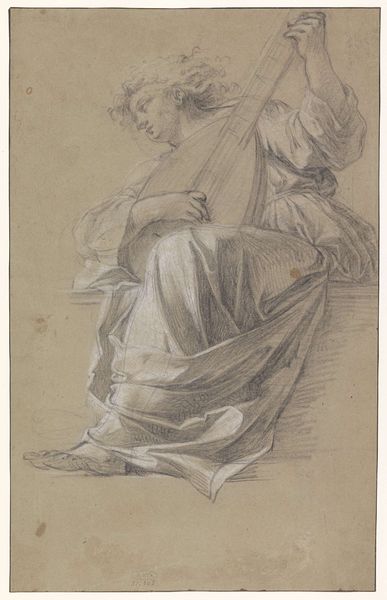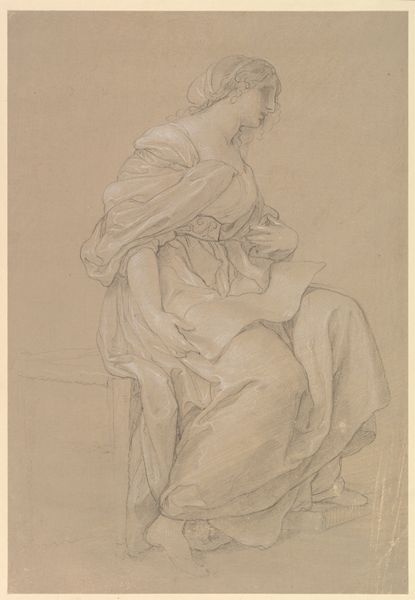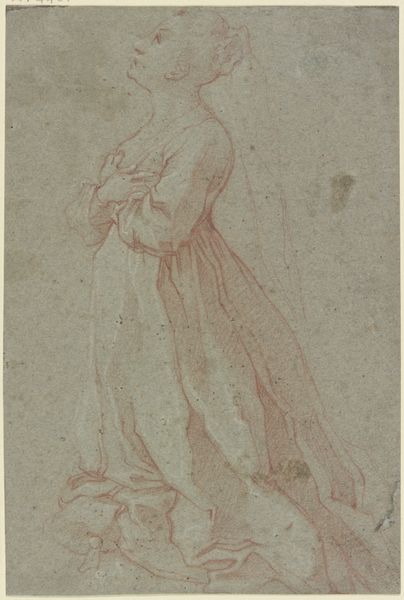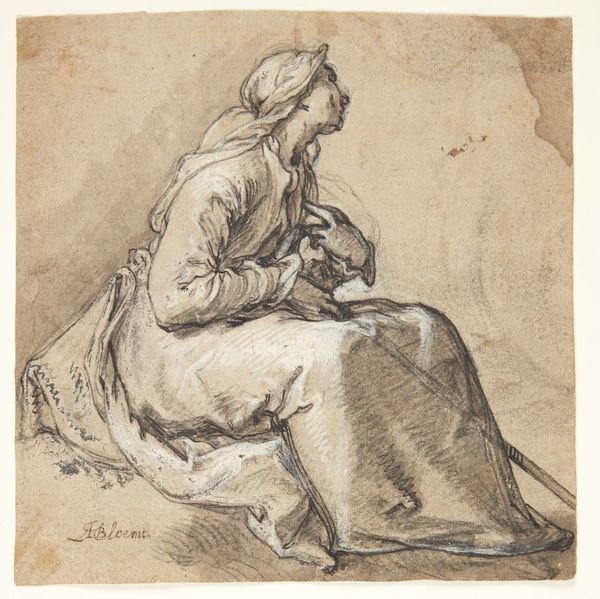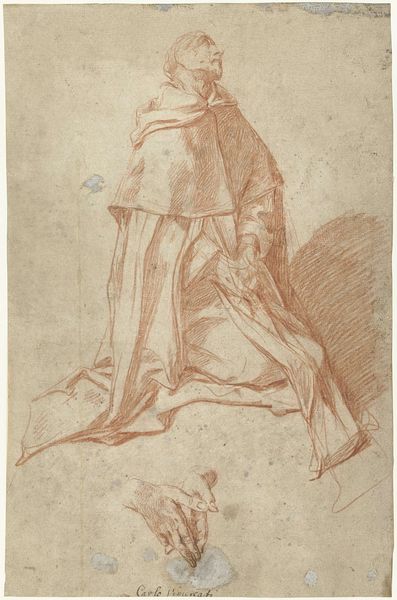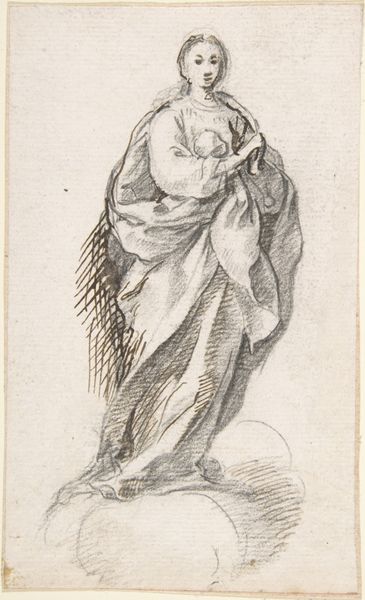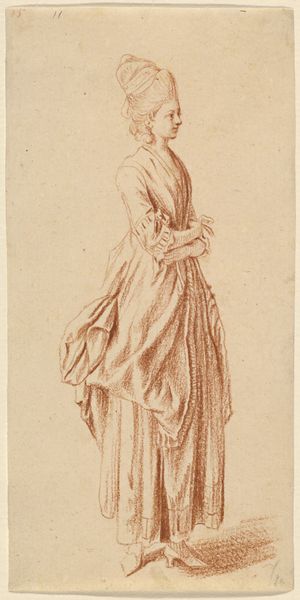
drawing, paper, ink, pencil
#
portrait
#
drawing
#
pencil sketch
#
mannerism
#
figuration
#
paper
#
ink
#
pencil
#
academic-art
#
nude
Dimensions: height 265 mm, width 217 mm
Copyright: Rijks Museum: Open Domain
Editor: This drawing, "Zittende vrouw, naar rechts gewend en achterom kijkend," from around 1560-1600, is attributed to Giovanni Antonio da Pesaro. It’s done with pencil and ink on paper, depicting a seated woman. The folds in her drapery are what catch my eye most. How do you interpret the artist's choice of these materials, and their effect on the artwork as a whole? Curator: This work exemplifies the Mannerist interest in form and the figure. Consider the cost and availability of paper, pencils, and ink during the late 16th century. The access to materials speaks volumes about the artist's position, but more importantly, about the commodification of artistry and the availability of the human figure. The deliberate choice to depict a draped figure highlights the period's fascination with artifice. Editor: That's interesting. I hadn't really considered the socioeconomic aspect of simply having the materials available. So, by showing a figure with these dramatic lines and shading achieved through the specific techniques afforded by pencil and ink, it highlights both artistic skill, cultural fascination with appearances, and potentially the figure's social standing too, right? Curator: Precisely. This is a period that increasingly prized the technical skill of the artist, linking labor directly to social prestige and financial value. The production of art, the artist, the materials, and its relationship to capital come together to represent what this era stood for. Who possessed such images and why becomes a pressing question, pointing to networks of patronage and status. What does this tell you about labor divisions at the time? Editor: It sounds like the material constraints and access dictated what could be created and consumed, highlighting a world driven by the marketplace in the creation of the artwork. Curator: And the power dynamics inherent within. Remember to consider these works as products of labor and instruments of social power. Editor: Right, thank you! I’ll definitely consider the material conditions more carefully from now on.
Comments
No comments
Be the first to comment and join the conversation on the ultimate creative platform.
